Along the Margit Boulevard, in the area surrounded by today's Lövőház Street, Margit Boulevard, Kisrókus Street and Marczibányi Square, the manager of the Ganz factory at the time, András Mechwart, founded the Department of Electrical Engineering in 1878. In the last third of the 19th century, this area was still highly industrial, as the Ganz foundry operated on the other side of Margit Boulevard.
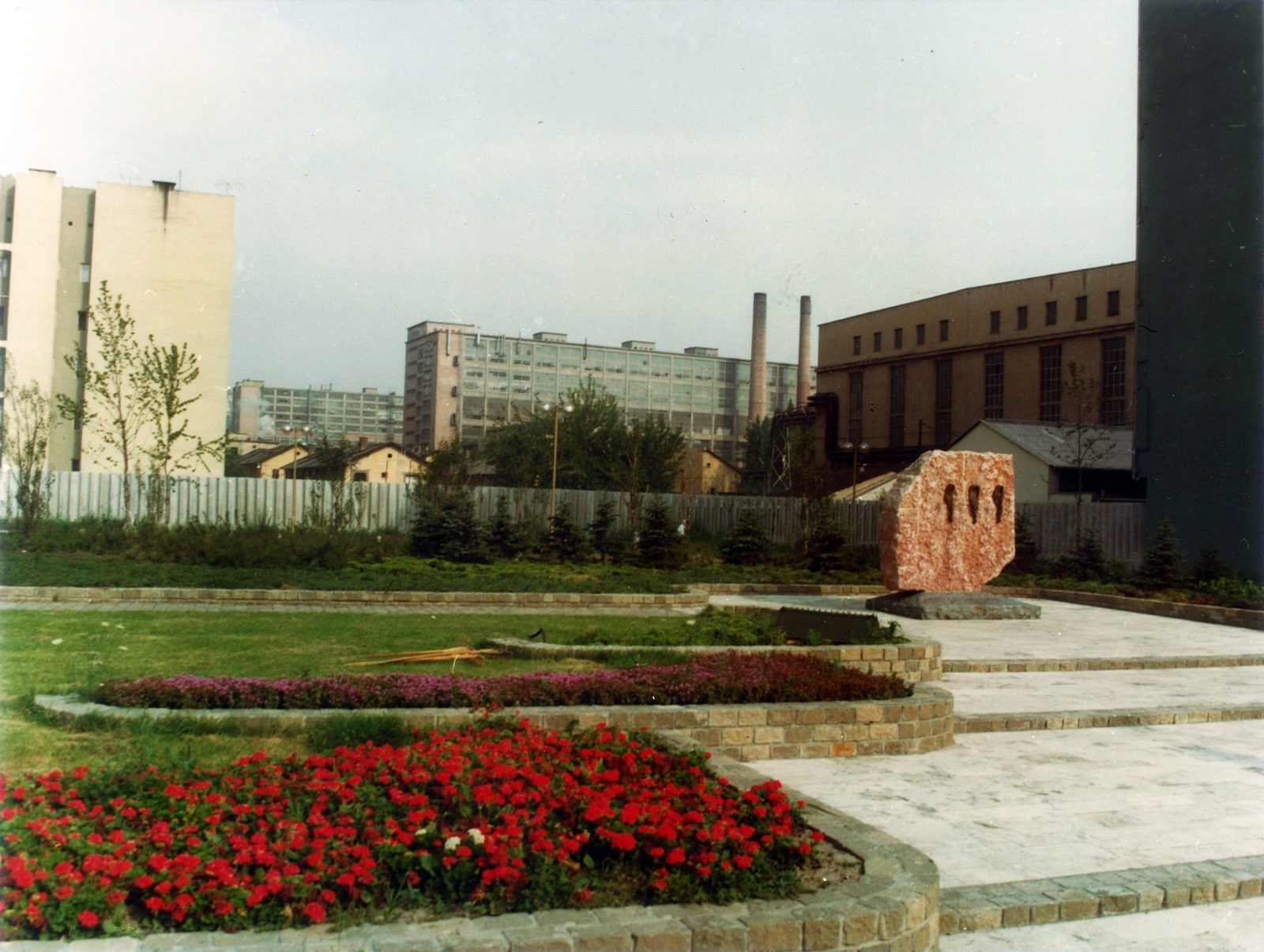
Today's Millenáris was once home to the buildings of the Ganz Works. On the right of the 1980 picture is the Monument of National Martyrs (Photo: Fortepan/No.: 141356)
In the 20th century, the area became more and more built-in, but the factories remained in the increasingly downtown environment. True, the original Ganz factory and foundry in nearby Bem József Street was closed in the early 1960s (the Ábrahám Ganz Foundry Collection is one of the surviving buildings), and the buildings were partially demolished, but on the Mártírok, today’s Margit Boulevard, the electricity factory continued to operate until the change of regime, because in 1991, the relocation of production to the countryside began. At that time, the plant was already operating under the name Ganz Ansaldo Ltd.
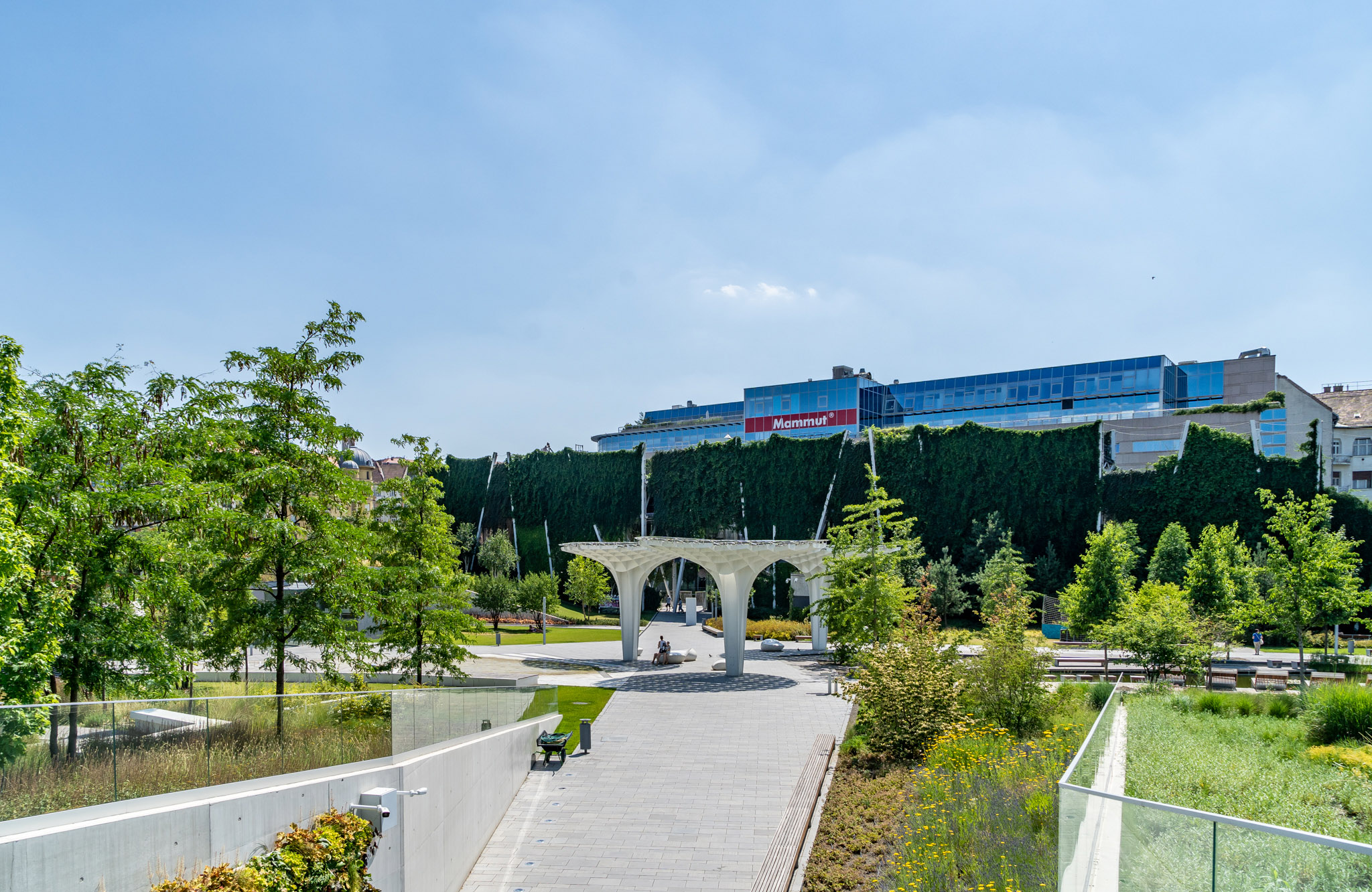
The former factory became an exhibition place, park and event venue (Photo: Balázs Both/pestbuda.hu)
On the site of the factory, the construction of the current park could begin. In 1999, the government decided to establish an event and exhibition centre and a park here. The work was not easy as the area was virtually completely built-in. The construction of the park began on 12 August 2000, with the blasting of a 37-metre-high factory building. This was reported by Népszava on 14 August 2000:
“Approximately 60 kilograms of Slovak-made explosives located at the foot of the building were activated by electronic remote control. The building collapsed in seconds, leaving about 10 metres high and 5,000 tons weight of debris. The area was closed at the time of the detonation which was similar to a minor earthquake.”
After five more explosions came the removal of 120,000 cubic meters of debris, including 3,000 tons of steel scrap.
It was not enough to blow up or demolish old buildings - including huge concrete structures such as the two-metre-thick spinning tunnel with reinforced concrete walls used to test the turbines - something had to be started with the ground because both the ground and groundwater were contaminated, even 3-3.5 metres deep with toxic heavy metals and oil derivatives. 8 thousand tons of oil had to be removed. In addition to the soil change, the groundwater had to be treated, and a separate treatment plant had to be set up on-site. There was an area where, after removing the contaminated soil, a pit large enough to accommodate a two-story underground garage was formed.
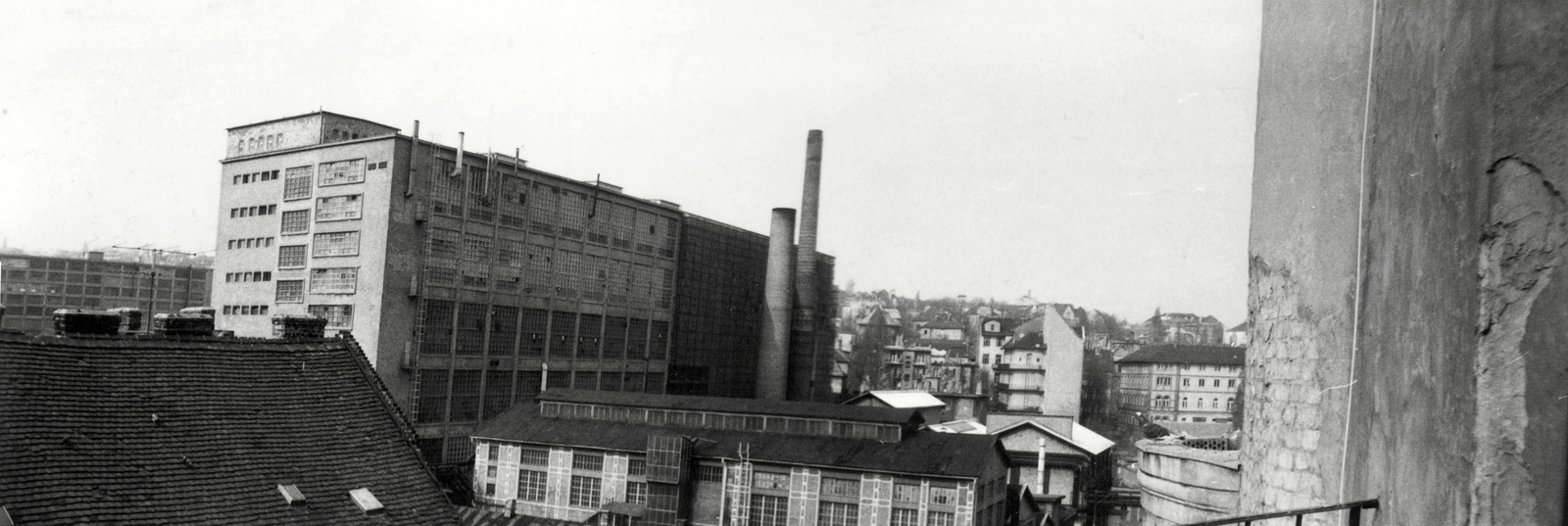
The huge buildings could only be destroyed by blasting (Photo: Fortepan/No.: 78050)
Népszabadság wrote about the emerging park during the construction, on 27 January 2001:
“The garden will be everything but normal. In the part of the park close to the main entrance, they try to entice visitors to roam around with plants, colours, lights and surfaces. Visitors can come across all the usual things here, only most of them appear in a completely unusual way. In the middle of the park, there will be a living lake - a peculiarly shaped music pavilion on the shore - whoever wants to can walk out on metal benches above the water mirror. Between Fény Street and Kis Rókus Street, there are vines, a field of wheat is swaying around the apple trees, but the role of grain bales is taken over by shaped boxwood.”
However, not all buildings were demolished. The “B” building, the former large-scale assembly hall erected in 1911 and declared a monument in 1997, remained, as did Hall “D”, completed in 1897. The new entrance building and two more halls were built between them.
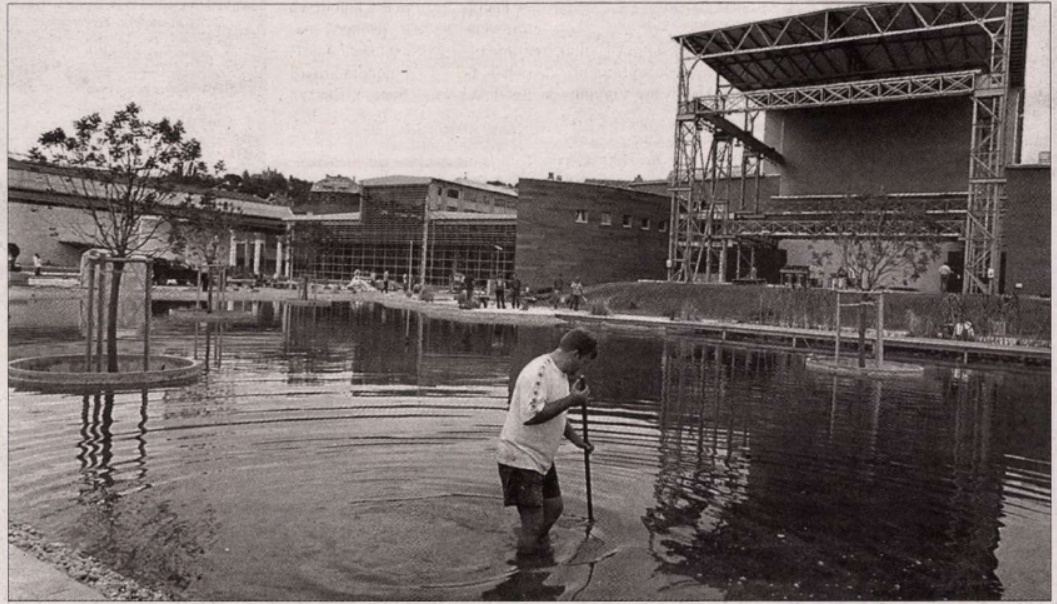
The final touches can be seen on the photo of the Magyar Nemzet published on 6 July 2001
Originally, the Millenáris was supposed to open on 15 March 2001, but construction was delayed, and the park was not completed until 6 July 2001. The opening series of events lasted for four days, as summarised in the 6 July 2001 issue of Magyar Nemzet:
"Millenáris Park, a cultural centre established in the area of Ganz Works, will open its doors at three o'clock this afternoon in Buda, in the "shadow" of the Mammut. With its retained, rebuilt, industrially famous factory buildings, new facilities, and a “green area” created by young park designers, it offers a series of programs for the people of the capital and visitors of Budapest that they will not find anywhere else in the country. (…) The park inauguration lasts for four days: it will include round dancing and folk music, a stilt parade with whistles, drums, a theatrical play and a performance from Palócföld, it is impossible to list all of the attractions for the audience to Buda.”
Shortly afterwards, the Álmok Álmodói (Dreamers of Dreams) Exhibition opened in the rebuilt old halls, which was perhaps the most comprehensive exhibition in the history of Hungarian technology to date. Between 2005 and 2007, the Jövő Háza (House of the Future) exhibition opened.
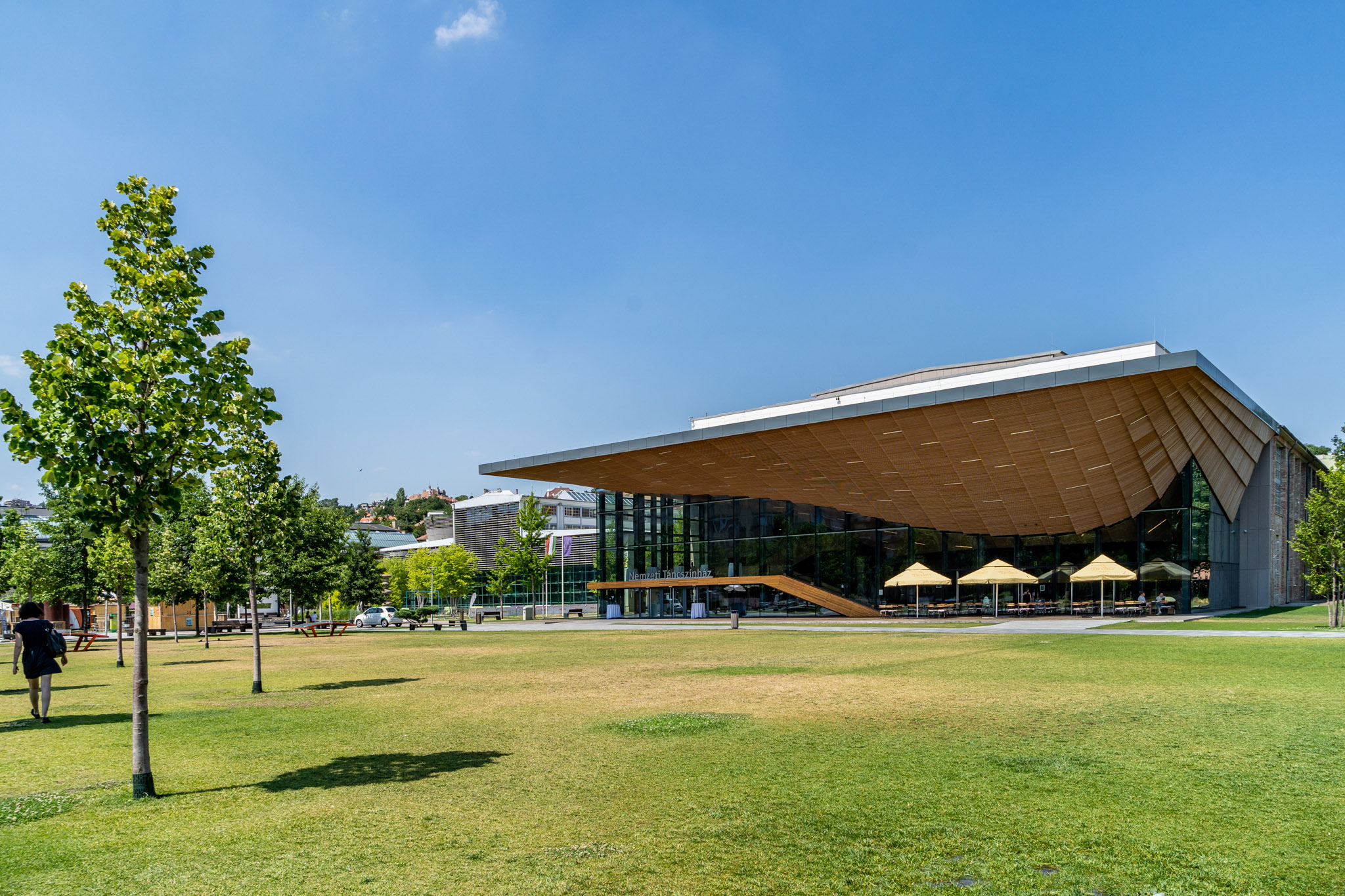
The building of the National Dance Theatre (Photo: Balázs Both/pestbuda.hu)
Today, the park covers an area of 48,000 square metres, of which the green area is 16,200 square metres. The centre has hosted many events in the last 20 years, as well as exhibitions and theatrical plays. Today, the National Dance Theatre also operates here in Building E.
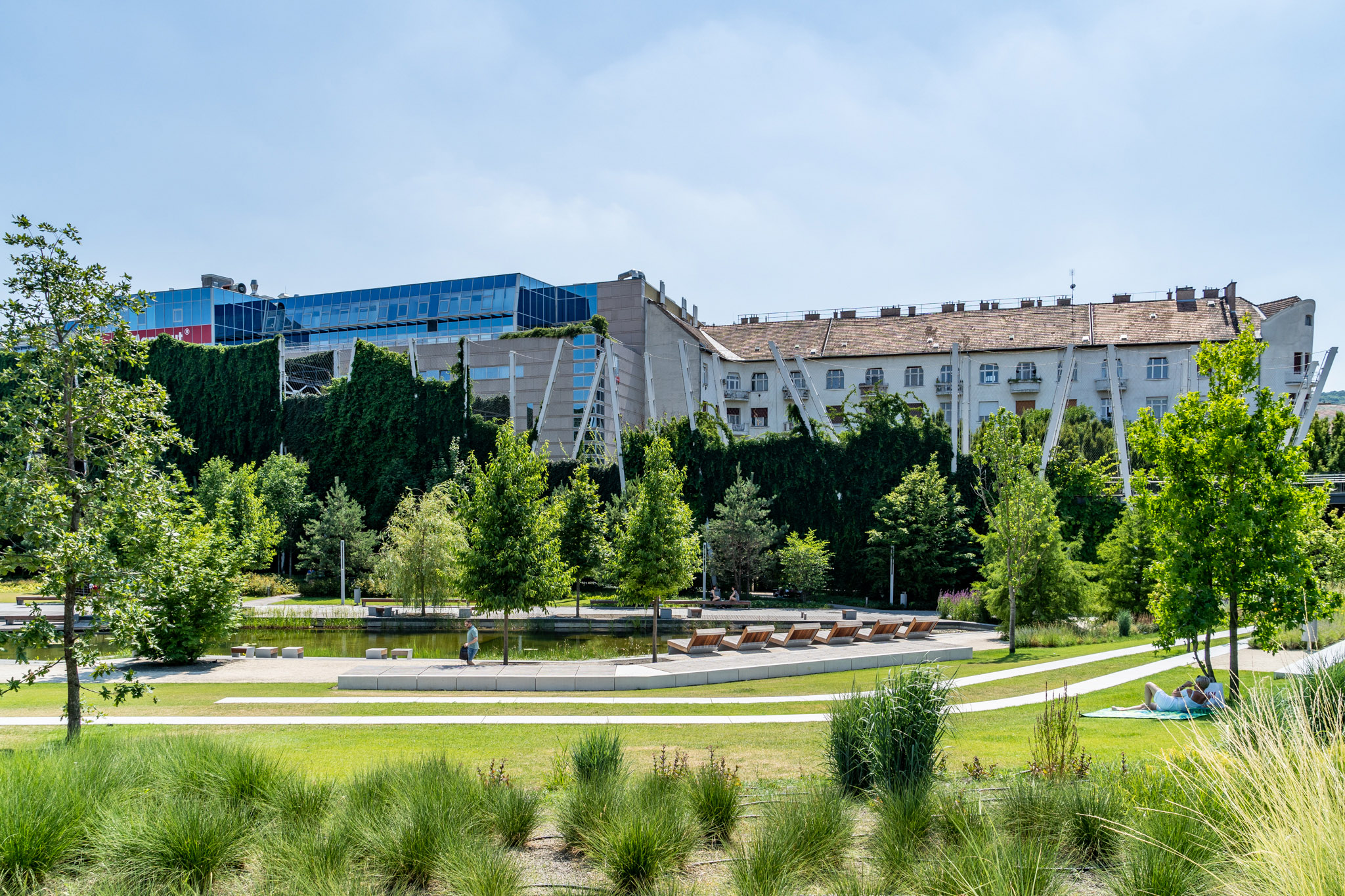
The Millenáris today (Photo: Balázs Both/pestbuda.hu)
One year ago, in August 2020, the Millenáris Széllkapu (wind gate), which was established on the site of the headquarters of the former Ministry of Metallurgy and Engineering Industry in 1971, joined the Millenáris Park with an area of about 2.5 hectares. With this, the wind on the Danube can cross the Margit Boulevard again, greatly improving the air in the area.
Pestbuda recently reported in detail on the renovation of the park's buildings.
Cover photo: The Millenáris (Photo: Balázs Both/pestbuda.hu)

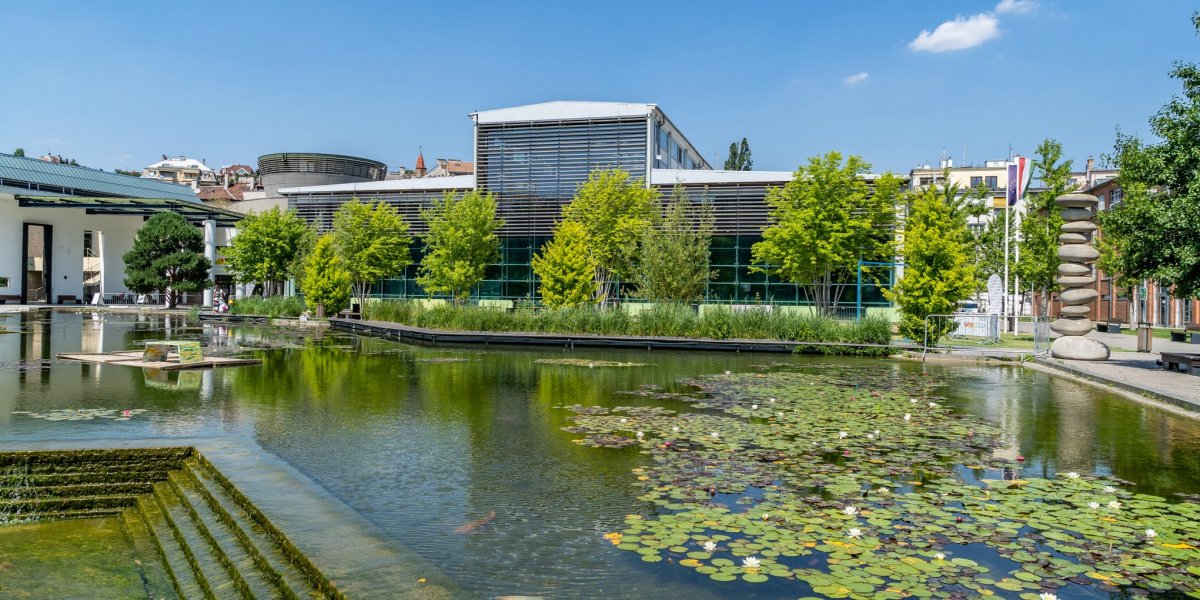


































Hozzászólások
Log in or register to comment!
Login Registration